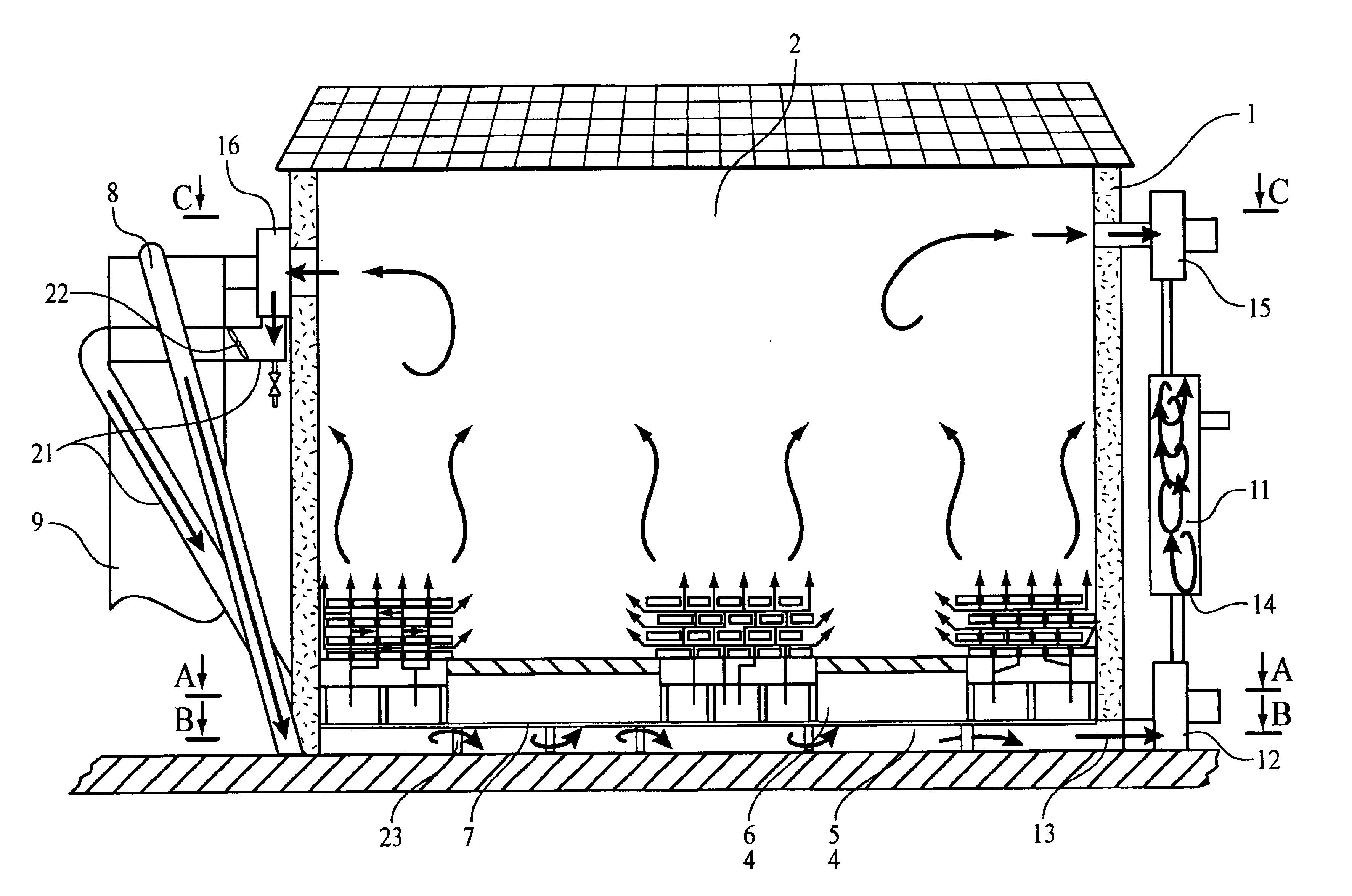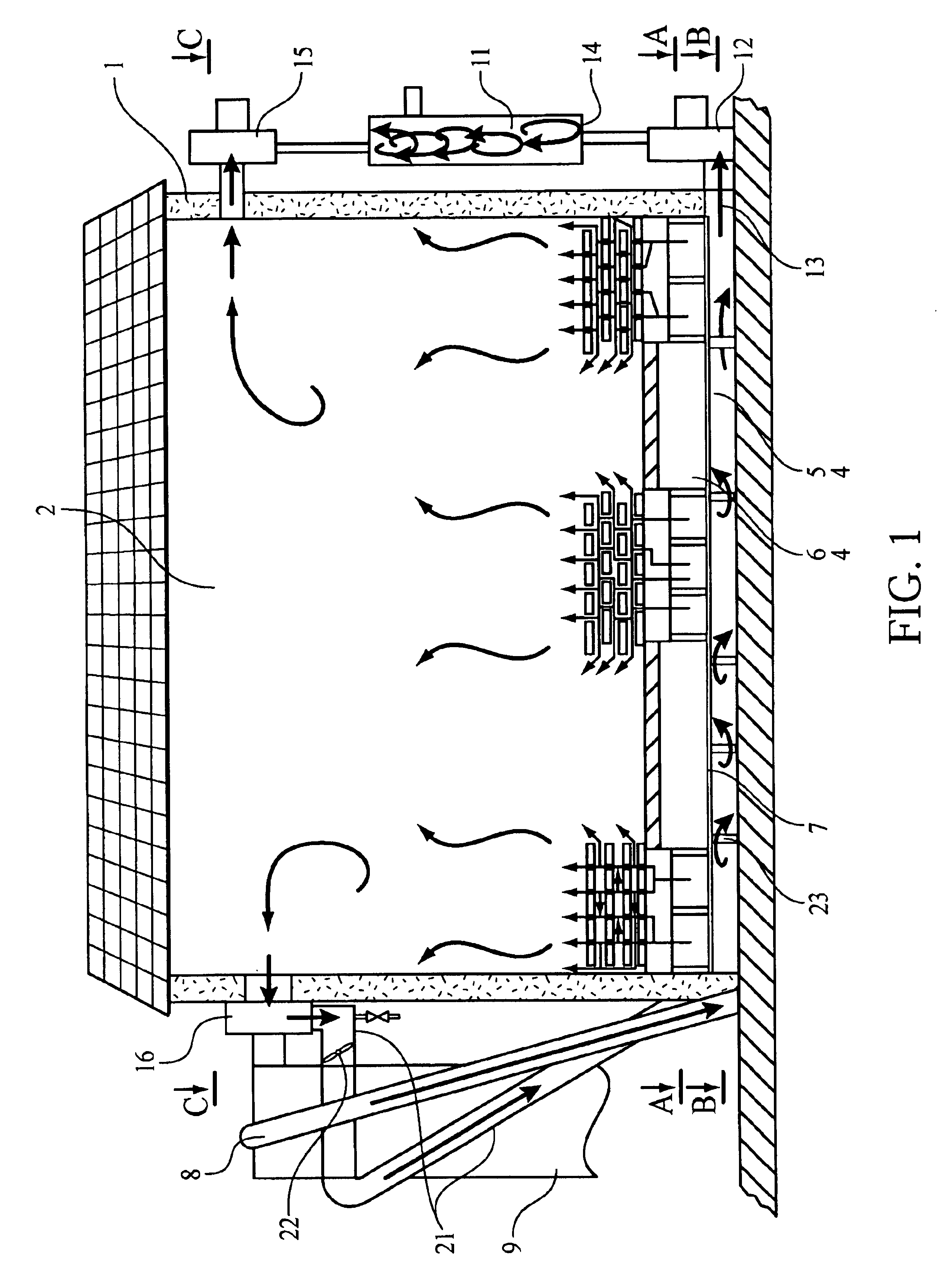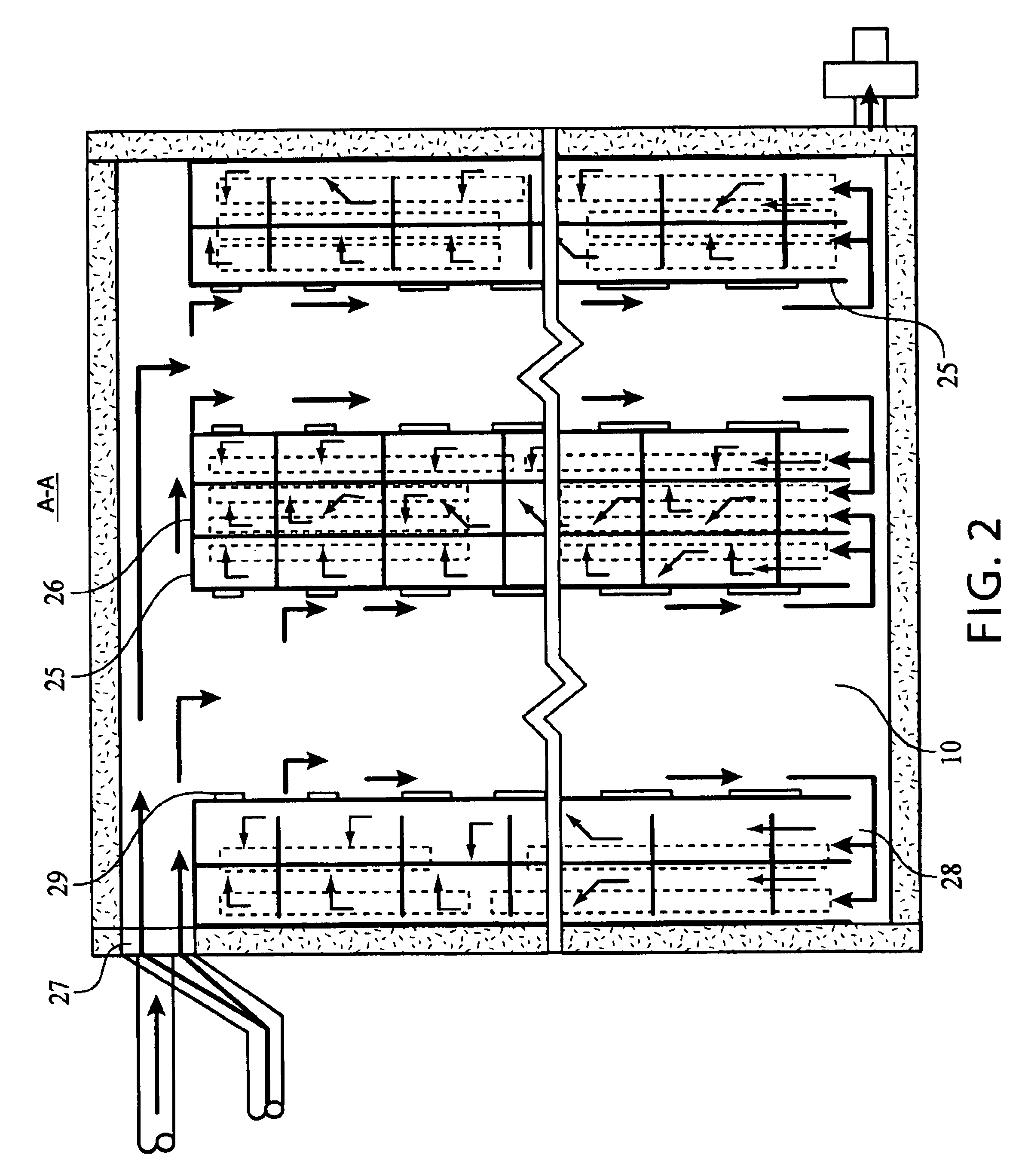Drying plant and method for drying wood
a drying plant and wood technology, applied in drying, light and heating equipment, furnace types, etc., can solve the problems of environmental pollution risk, complicated situation, and inevitable appearance of accompanying problems
- Summary
- Abstract
- Description
- Claims
- Application Information
AI Technical Summary
Problems solved by technology
Method used
Image
Examples
Embodiment Construction
The drying plant consists of the heat-insulated drying chamber (1) with the free internal space (2), the furnace (3) located close to the drying chamber (1), the bottom of the drying chamber (4) that is designed with two cavities (5 and 6), horizontally arranged and separated from each other by the hermetic partition (7) made of diathermic material. The lower cavity (5) in the bottom (4) of the drying chamber (1) is designed in such a way as to provide forced feeding of furnace gases into the cavity (5) from the exhaust pipe (8) of the furnace flue (9). The upper cavity (6) in the bottom (4) of the drying chamber (1) is designed in such a way as to provide feeding of the air (drying agent) heated in the furnace flue (9) into said cavity (6); in the upper cavity (6), the heated air is distributed among the air distribution channels (10) to interact with the material to be dried located in the free internal space of the drying chamber (1). There is a possibility to provide forced feed...
PUM
 Login to View More
Login to View More Abstract
Description
Claims
Application Information
 Login to View More
Login to View More - R&D
- Intellectual Property
- Life Sciences
- Materials
- Tech Scout
- Unparalleled Data Quality
- Higher Quality Content
- 60% Fewer Hallucinations
Browse by: Latest US Patents, China's latest patents, Technical Efficacy Thesaurus, Application Domain, Technology Topic, Popular Technical Reports.
© 2025 PatSnap. All rights reserved.Legal|Privacy policy|Modern Slavery Act Transparency Statement|Sitemap|About US| Contact US: help@patsnap.com



